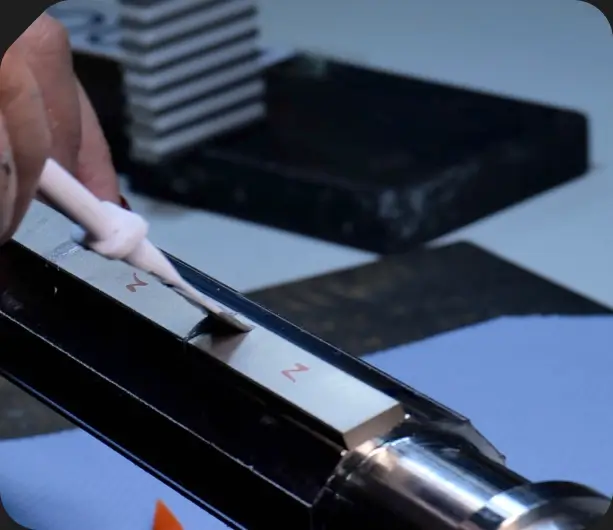Component Sizing & Strength Analysis

Component Sizing & Strength Analysis
This capability involves utilizing engineering principles and software tools to determine the optimal sizes of motor components such as shafts, bearings, and housings. Additionally, strength analysis is conducted to ensure that these components can withstand the mechanical stresses experienced during operation, ensuring structural integrity and reliability.
Structural FEA

Structural FEA
Engineers utilize advanced simulation techniques like Finite Element Analysis (FEA) to evaluate the structural integrity and behavior of motor components under various loading conditions. FEA allows for detailed analysis of stresses, strains, deformations, and failure modes, enabling designers to optimize component geometry and material selection for enhanced performance and durability
NVH

NVH
NVH analysis involves comprehensive evaluation and optimization of motor designs to address noise, vibration, and harshness issues. By identifying and mitigating sources of noise and vibration, engineers enhance motor comfort and performance, improving user experience and reducing wear and tear on components.
Material Selection

Material Selection
Engineers carefully select materials based on their mechanical, thermal, and electrical properties to meet the performance requirements of motor components. Factors such as strength, stiffness, thermal conductivity, and electrical resistivity are considered to ensure durability, efficiency, and reliability throughout the motor’s lifespan.
Manufacturing & Standards

Manufacturing & Standards
This capability involves adhering to manufacturing standards and best practices to ensure the quality, efficiency, and compliance of motor production processes. By following established standards and protocols, manufacturers can consistently produce high-quality motors that meet customer expectations and regulatory requirements.
Design for Manufacturing & Design for Assembly

Design for Manufacturing & Design for Assembly
Engineers optimize motor designs for manufacturability and assembly, considering factors such as part complexity, tooling requirements, and assembly sequence. By simplifying manufacturing processes and minimizing assembly complexity, designers can reduce production costs, improve product quality, and shorten lead times.
Stator and Rotor Cores (Robust Design, Manufacturing)

Stator and Rotor Cores (Robust Design, Manufacturing)
This capability focuses on developing robust designs and manufacturing processes for stator and rotor cores, which are critical components of electric motors. By optimizing core geometry, material selection, and manufacturing techniques, engineers enhance motor efficiency, reliability, and performance.
Winding Design (Manufacturing)

Winding Design (Manufacturing)
Engineers design motor windings to optimize performance and manufacturability, considering factors such as wire gauge, insulation materials, and winding techniques. By optimizing winding configurations and manufacturing processes, designers can improve motor efficiency, reliability, and power density.
Permanent Magnet (Fixing and Insertion, Magnetization)

Permanent Magnet (Fixing and Insertion, Magnetization)
This capability involves implementing effective methods for fixing and inserting permanent magnets into the motor structure, ensuring proper magnetization and alignment for optimal performance. Engineers optimize magnet placement and orientation to maximize magnetic flux density and torque output while minimizing losses and demagnetization risks.
Sensors and Cables, Guides (Positioning)

Sensors and Cables, Guides (Positioning)
Engineers integrate sensors, cables, and guides into motor designs for precise positioning and efficient operation. By carefully positioning sensors and cables and providing guides for cable routing, engineers ensure accurate measurement and control of motor performance while minimizing interference and maintenance requirements.
Tolerance Analysis

Tolerance Analysis
Engineers conduct tolerance analysis to ensure precise fits and alignments of motor components, minimizing assembly issues and optimizing performance. By considering variations in dimensions and tolerances, designers ensure that motors meet design specifications reliably and consistently, reducing scrap and rework during manufacturing.
Sensitivity Analysis

Sensitivity Analysis
This capability involves performing sensitivity analysis to identify critical parameters and their impact on motor performance and reliability. By systematically varying input parameters and analyzing their effects on motor outputs, engineers gain insights into the sensitivity of motor performance to different design factors. This information guides design optimization efforts, ensuring that key performance metrics are met under varying operating conditions.